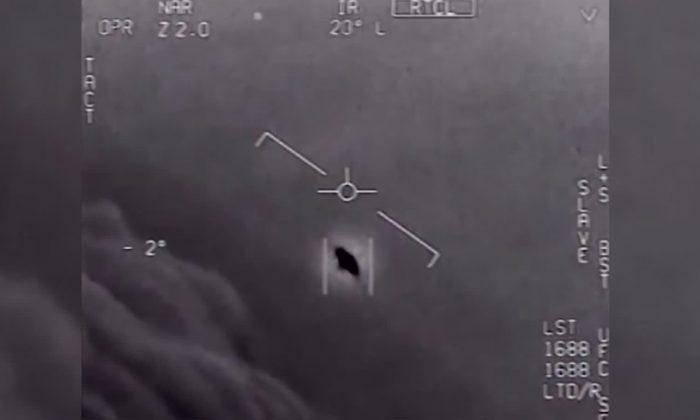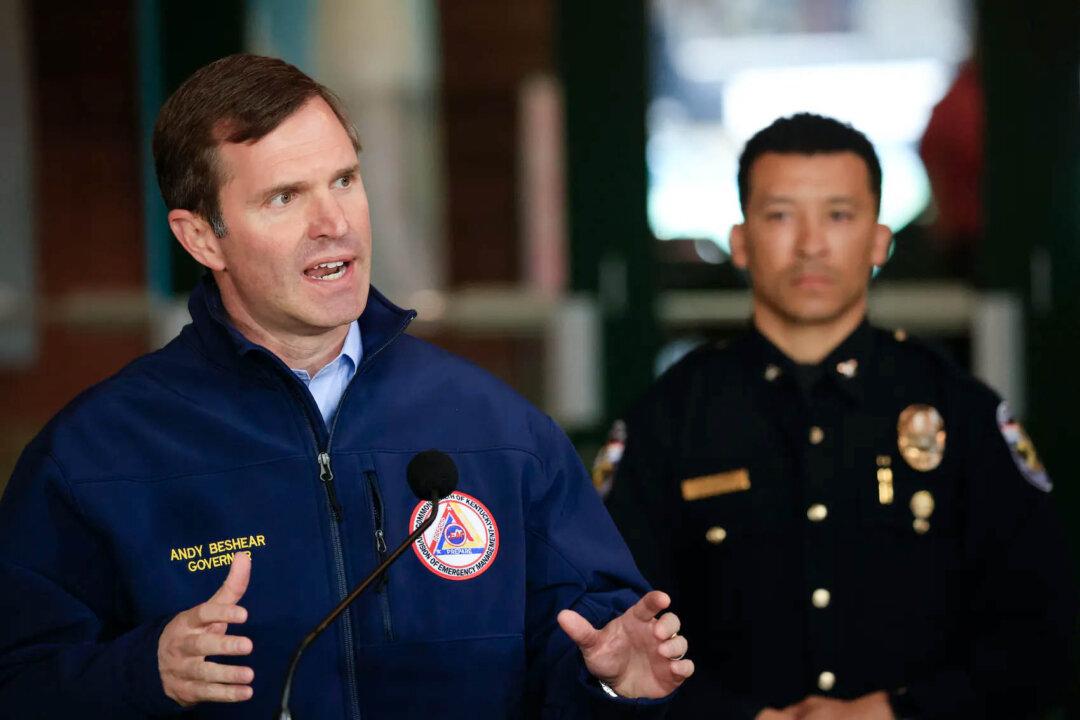U.S. lawmakers have made references in an appropriations bill and accompanying Senate Intelligence Committee report that Congress believes some unidentified aerial phenomena (UAP), commonly referred to as UFOs, might not be “man-made.”
Further, Congress notes that threats against the national security of the United States from these “cross-domain transmedium” objects have been exponentially increasing.
The bill seeks to modify Section 1683 of the National Defense Authorization Act for fiscal year 2022 to establish an organization nestled inside the Department of Defense (DoD) tasked with an expanded scope of UFO investigation.
The legislation states that the DoD would have to establish the new office within 120 days after the bill is enacted into law.
The new office would replace the Pentagon’s Airborne Object Identification and Management Synchronization Group, which was established in November 2021 and replaced the U.S. Navy’s UAP Task Force formed in June 2020.
To prompt the DoD into action, Congress has renamed the UAP Task Force to be the Unidentified Aerospace-Undersea Phenomena Joint Program Office.
DoD UFO Office Expands to Water Domains
The new UFO joint program office will continue the work of the existing UAP Task Force and have an expanded cross-domain scope that now includes “space, atmospheric, and water domains.”According to the bill, the Unidentified Aerospace-Undersea Phenomena Joint Program Office will also be tasked with duties pertaining to “transmedium objects or devices and unidentified aerospace-undersea phenomena” and “currently unknown technology and other domains.”
“That change reflects the broader scope of the effort directed by the Congress,” lawmakers said in the report. “Identification, classification, and scientific study of unidentified aerospace-undersea phenomena is an inherently challenging cross-agency, cross-domain problem requiring an integrated or joint Intelligence Community and DoD approach.”
Lawmakers defined “transmedium” objects in the legislation as objects or devices that are “observed to transition between space and the atmosphere, or between the atmosphere and bodies of water” and which are “not immediately identifiable.”
Scope Doesn’t Include ‘Man-Made’ UFOs
Lawmakers noted that the scope of the new DoD office specifically relates to UFOs that are not later found to be man-made.“The formal DoD and Intelligence Community definition of the terms used by the Office shall be updated to include space and undersea, and the scope of the Office shall be inclusive of those additional domains with focus on addressing technology surprise and ‘unknown unknowns,’” lawmakers said in the report.
“Temporary nonattributed objects,” the report continues, “or those that are positively identified as man-made after analysis, will be passed to appropriate offices and should not be considered under the definition as unidentified aerospace-undersea phenomena.”
UFOs and National Security
Pentagon officials are treating UAP sightings with increased seriousness for their potential risks to U.S. national security.Since that report was published in June 2021, Scott W. Bray, deputy director of naval intelligence involved in the UAP Task Force, has said that the “UAP Task Force database has now grown to contain approximately 400 reports.”

In May, Pentagon officials showed lawmakers two videos of UAPs in the first open congressional hearing on the subject since 1966.
Among the incidents shared with lawmakers were stories of nuclear ICBMs rendered inoperable during a UFO sighting and footage of flying objects violating the laws of physics.
Pentagon officials told lawmakers that sighting incidents are “frequent” and “increasing,” yet they cannot offer “firm conclusions” on their nature or intent.
The sighting incidents that interest the Pentagon the most are those that exhibit “flight characteristics or signature management that we can’t explain with the data we have available,” Bray told lawmakers when asked about his knowledge of flying objects that seem to move without visible means of propulsion and violate existing principles of physics.
“I would say that we’re not aware of any adversary that can move an object without discernible means of propulsion,” he added.





